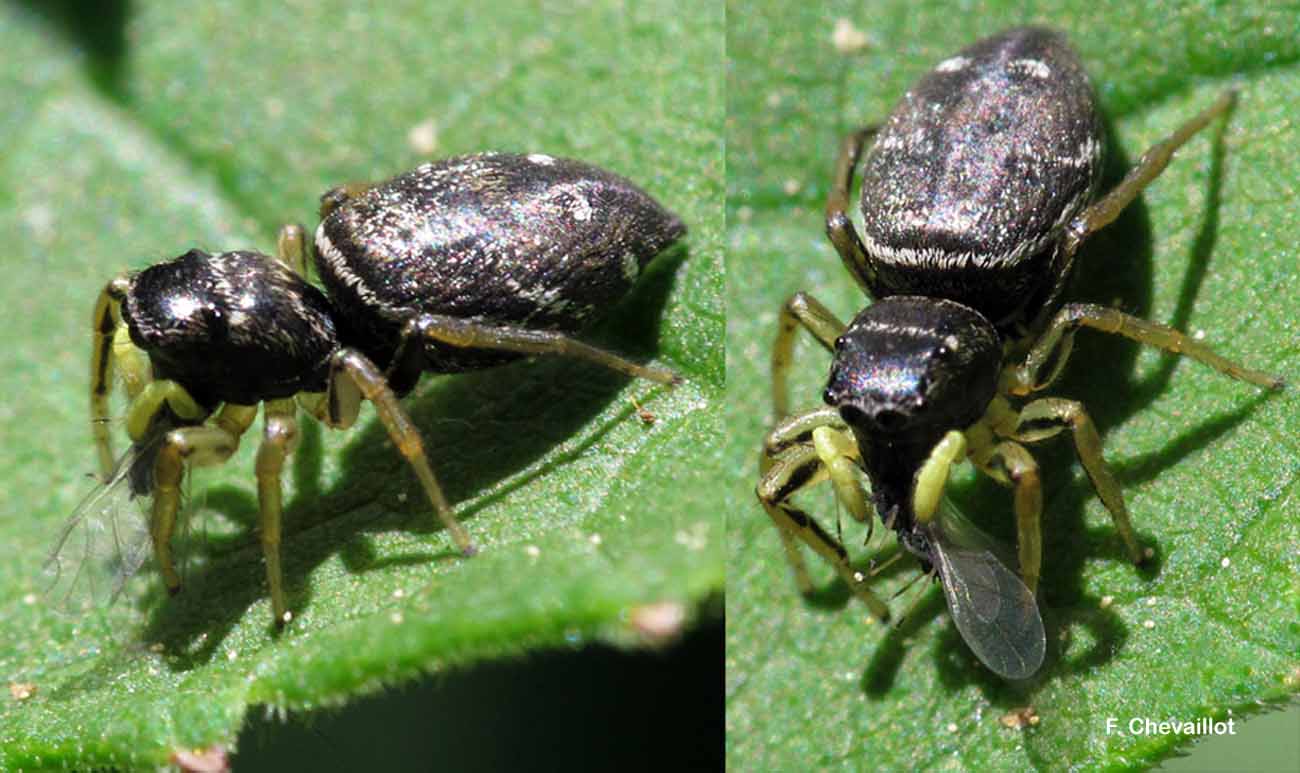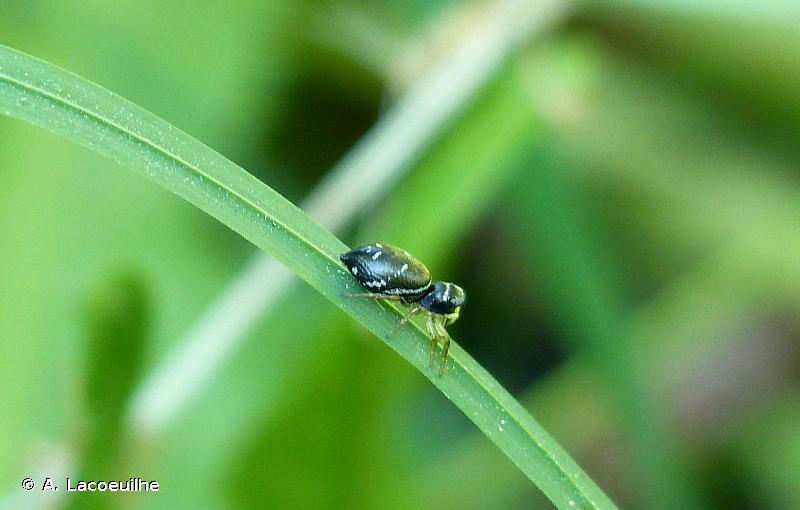
cd_nom

| Author : F. Chevaillot |
 |
To get the picture, please visit:
Fred CHEVAILLOT
Moulin de Castor
La Maynobe
12550 COUPIAC
06 51 19 18 32
09 88 28 31 26
www.insecte.org
email : fred.chevaillot@wanadoo.fr
Any reuse of one or more photographs on this site is subject to an authorization request from the author.
Link to the Code of Intellectual Property (Legifrance)

| Author : A. Lacoeuilhe |
 |
To get the picture, please visit:
Aurélie Lacoeuilhe
aurelie.lacoeuilhe@wanadoo.fr
Legend: Femelle
Despite the Creative Commons license, please inform the author of the use which will be made of his photo
Distribution mondiale
Europe Moyen-Orient
Caractères distinctifs, espèces
Taille - femelle : 4-6 mm, mâle : 3,5-4 mm.
Cette petite araignée-sauteuse possède les yeux caractéristiques de sa famille. Il existe quinze espèces du genre en France. Le corps du mâle est noir plus ou moins brillant avec les extrémités des pattes brunes. Le corps de la femelle est noir brillant à reflets cuivrés (d'où son nom) avec des taches d'écailles blanches qui constituent en général une bande transversale au milieu du céphalothorax, une bande latérale à l'avant de l'abdomen, une autre vers le milieu et deux taches vers l'arrière. Les pattes-mâchoires sont jaunes, les pattes sont claires avec des bandes longitudinales noires. Une autre espèce, Heliophanus flavipes, ressemble beaucoup par la couleur à H. cupreus. Pour identifier clairement les différentes espèces du genre, l'observation des pièces génitales est indispensable.
Milieux colonisés
Végétation basse de friches, prairies, de sous-bois
Chasse
L'espèce chasse le jour dans la végétation herbacée. Ses proies sont très diverses, un peu plus petites que lui : pucerons et autres petits insectes. Pour la période d'inactivité, il tisse une loge de soie ovalaire pourvue à chaque extrémité d'une issue.
Développement, cycle
Les adultes apparaissent en mai. Les mâles sont présents jusqu'en juillet, les femelles jusqu'à l'automne. Le cycle est annuel.
Les accouplements ont lieu en juin-juillet. Le mâle sécrète après l'accouplement une substance qui obture l'épigyne de la femelle, interdisant tout accouplement ultérieur. Lors de la ponte, la femelle garde ses œufs, tenus ensemble par un fil de soie dans une grande loge cachée sous une écorce ou une pierre. Les pontes comprennent de quinze à une trentaine d'œufs. Après l'éclosion, la femelle reste encore avec sa progéniture plusieurs jours. Les jeunes se dispersent ensuite puis mènent chacun une vie solitaire. Les jeunes passent l'hiver à un stade intermédiaire.
A. Canard(Université de Rennes/Service du Patrimoine Naturel, MNHN),2014
Continental
Metropolitan France
Overseas
Marine
Metropolitan France
Overseas
The map presents a summary at the 10 x 10 km grid of the observation data for the species transmitted to the SINP. These data have been subjected to validation filters.
The map presents a reference distribution layer of the species at the scale of departments and marine sectors. The presence and absence data were established by expertise within a network of partners. This reference distribution is used in the validation process of the SINP data at the INPN level.
Corresponds to a report on the basis of at least one observation proved within a period of 10 years (20 years for little-known invertebrates) preceding the year and no presumption of extinction since obtaining the last data nor doubt on reproductive and implemented nature of this population. For migratory species, the presence indicated concerns areas of reproduction.
This status is based on one or more of the following criteria:
This point covers the absence, more difficult by nature to demonstrate than presence. This status is based on one or more of the following criteria:
This status must be assigned to a department in which the presence of the species is casual.
Particular case of absence due to a proven extinction less than a half century ago (older disappearances are treated as "no probable or definite").
In the state of knowledge, we can not comment on the presence or absence in the current department. This is the default status when not comprised in one of the previous categories or whenever there is doubt.
The map shows the global distribution of the species based on GBIF data (Global Biodiversity Information Facility).
